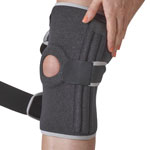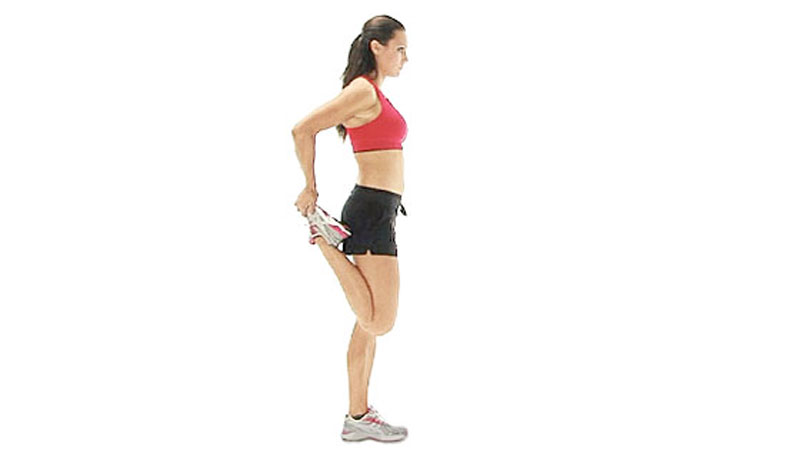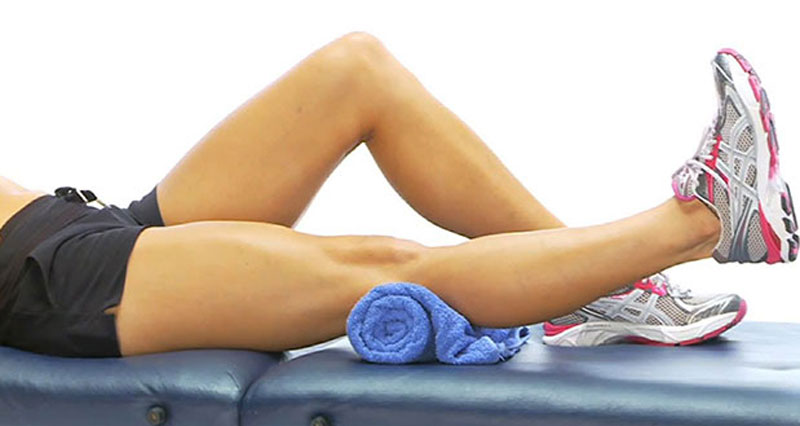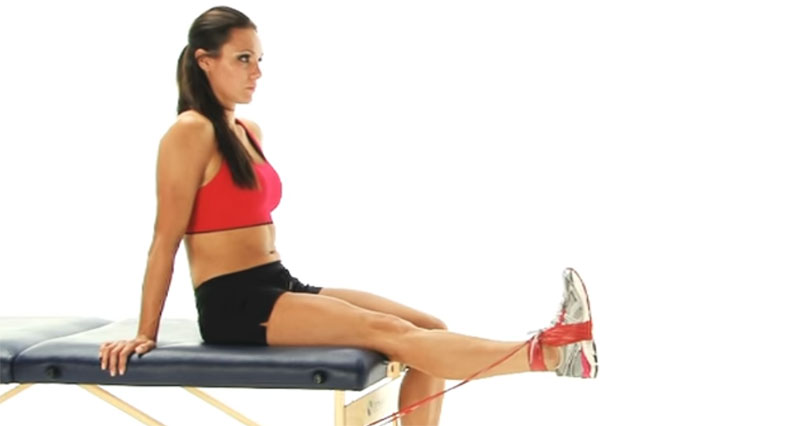Functional knee exercises are activity or sports-specific exercises. They include more complex exercises and agility drills, but in a controlled environment. As a result, they bridge the gap between basic knee strengthening exercises and returning to more sports-specific training.
Leaning tower at wall
Teaching Points:
Leaning tower exercise, also known as ‘A’ lock is performed against a wall.
- Drive the knee upwards and hold the position
- 3 sets of 4 each leg
A marching linear
Teaching Points:
This is a functional exercise that helps transition to running and more explosive exercises later on.
- March forwards on your toes driving your knees high
- 4 sets of 10 metres
A marching lateral
Teaching Points:
- Perform marching drill sideways, aiming to be on your toes with high knees
- 4 sets of 5 metres each way
Lunge walk
Teaching points:
- Land forward absorbing the force on the front leg
- Keep your body upright
- 3 sets of 4 reps each leg
Sumo kettle bell side squat
Teaching point:
- Hold a kettlebell and step out to the side planting all of the weight onto one leg
- As you squat down with the weight moving backward slightly turn out the other leg
- Repeat on the opposite side
- 3 sets of 4 each leg



